Argentinian tech tree for World of Tanks proposal by PikPikker
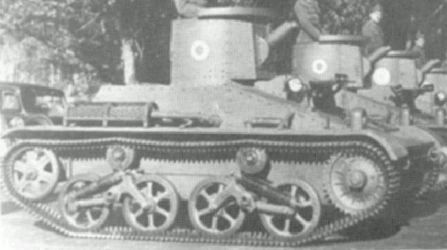
- 9/9/9 mm
- 90 hp
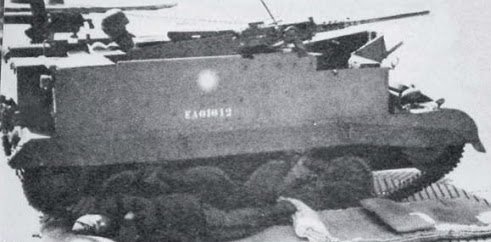
Vickers M1934 is one of the British tanks built for export. It was exported to several countries, one of which was Argentina that got at least 12 tanks in 1937 - the last time of exporting this tank model. Before this Argentina was about to order 160 Czech TNHP tanks, but it was impossible due to unstable situation in Europe. Most of the M1934's were used for training. In 1942 these tanks became too obsolete, so replacement with US tanks started by that time.
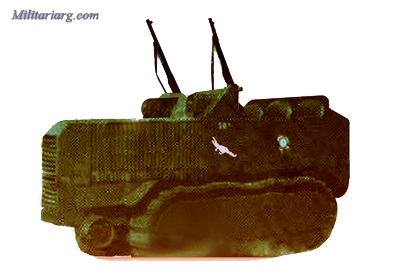

- 72 hp
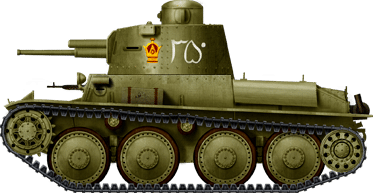
Yacare is an armored tractor based on International Harvester TD-18 which was a widely exported model in 1930s. It was built (actually just armored and got a pair mounting of Browning machine guns) in 1944-45 by the powers of Esteban de Luca, there were at least 3 vehicles. This armored tractor was used to tow different weapons, 20 mm AA gun and possibly light 37 mm and 75 mm guns. It wasn't used in any battles, but it was supposed to use the towed weapons as a self-defense. An idea of mounting such guns on the whole tractor (making it something like a tank destroyer) could be useful in this case - can be done in the game, but this fact is unhistorical (at least as far as we know). These tractors served until the end of 1940's, and after that they were disassembled.

This is the Iranian version of TNHP - Argentinian one should look the same (not about the color, of course)

- 25/15/15 mm
- 100 hp
- 145 hp

First TNHPs was built in 1935 - and exported to Iran - which were the earliest built tanks from the LT 38 series. It was a bit different from the original LT vz. 38 (gun, engine and turret, that was a little shorter). Argentina wanted to order 160 TNHPs at the same time as Iran, but this order was declined due to political problems. Argentinian Army got a bunch of Vickers M1934 instead lately, which were notably weaker, but they were better than nothing.


- 340 hp
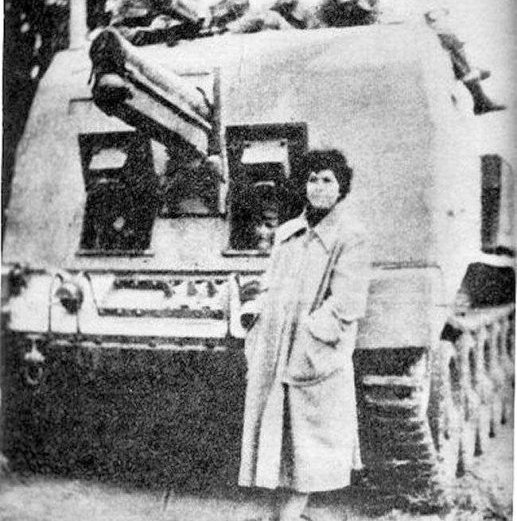
After the war, with the embargo lifted, Argentina was able to purchase certain amount of armored vehicles from the Allies’ surplus, including the British Crusader-based artillery tractors.
In the beginning of the 50′s, several Argentinian army officers had the idea to actually convert these tractors into self-propelled guns, using leftover armored plates they had access to. One tractor was converted by mounting a superstructure on top of the tractor, that housed the gun itself. In the mid-50′s, the prototype was trialed and after that, the conversion of the vehicles began en masse.
12 vehicles were allegedly produced (six with 105 mm and six with Krupp 75 mm), it’s possible though that the number was higher due to the absence of the Bofors modification info. The vehicles then in late 50′s took part in several army parades and were used for training, but they never saw combat. After being phased out, they all were scrapped and not a single vehicle survived to this day.


- 340 hp
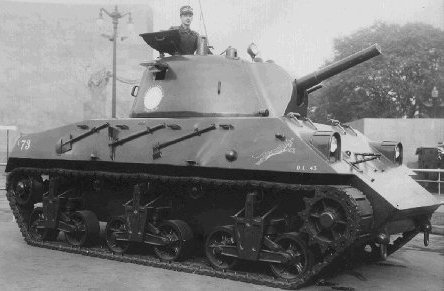
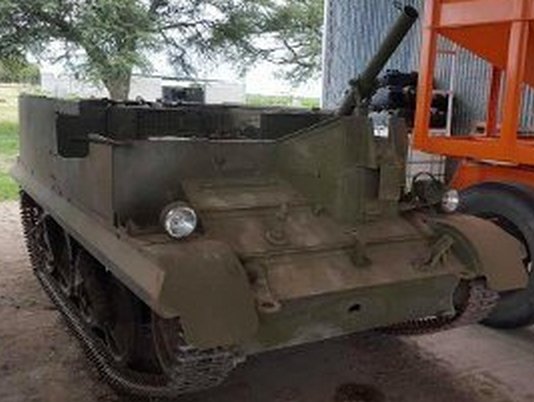
After the war, with the embargo lifted, Argentina was able to purchase certain amount of armored vehicles from the Allies’ surplus, including the British Crusader-based artillery tractors.
In the beginning of the 50′s, several Argentinian army officers had the idea to actually convert these tractors into self-propelled guns, using leftover armored plates they had access to. One tractor was converted by mounting a superstructure on top of the tractor, that housed the gun itself. In the mid-50′s, the prototype was trialed and after that, the conversion of the vehicles began en masse.
12 vehicles were allegedly produced (six with 105 mm and six with Krupp 75 mm), it’s possible though that the number was higher due to the absence of the Bofors modification info. The vehicles then in late 50′s took part in several army parades and were used for training, but they never saw combat. After being phased out, they all were scrapped and not a single vehicle survived to this day.


- 80/65/50 mm
- 500 hp
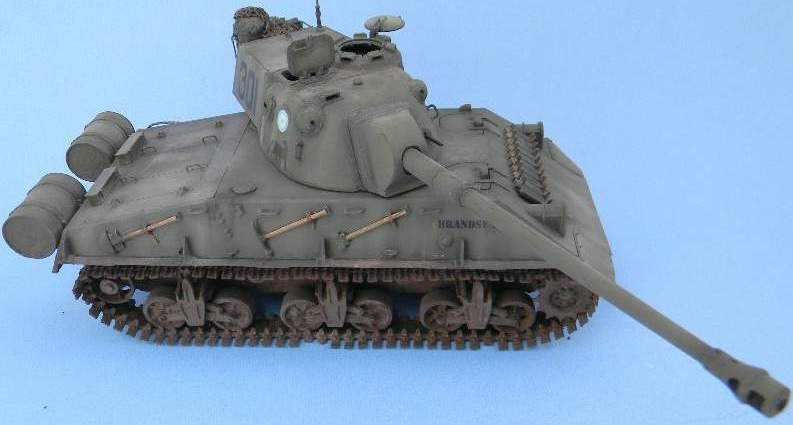
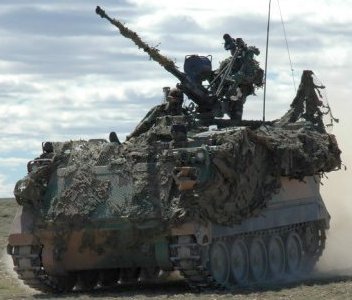
The Nahuel was designed in 1942 by LT. Colonel Alfredo Baisi as a way to provide a tank to the Army despite the American embargo. He took the standard vertical volute springs, roadwheels, return rollers, drive sprockets and idlers, in the same arrangement, as well as the tracks with rubber shoes, from the American M3/M4 chassis.
The first prototype trials - at first the hull was tested without the turret attached - ended well, the vehicle performed admirably. The vehicle was presented to public during a 1943 coup anniversary military parade on 4.6.1944 in Buenos Aires - first 10 Nahuels were ready by then. In the end, a total of 16 vehicles were produced in the Arsenal Esteban de Luca in Buenos Aires between 1943 and 1944. By 1944 however, Argentina officially "switched sides" and became an ally of the USA. As a result, American surplus Shermans were imported en-masse and there was no need to produce more Nahuels (especially since the late model Shermans were superior in most respects).
In the end, the Nahuel served until 1962, when the last one was decommissioned. Most were scrapped, some served as training targets and sadly not a single vehicle survived until now.
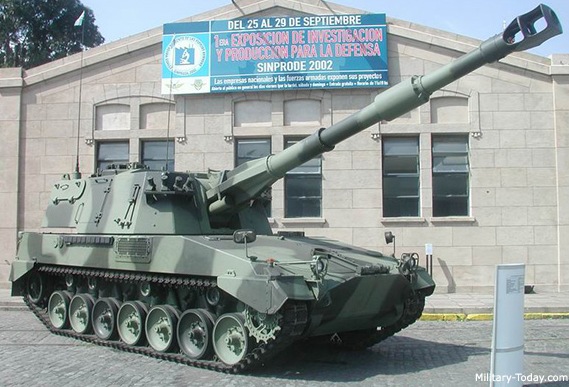
- Bulletproof
- 720 hp
The TAM VCA is a self-propelled 155 mm gun/howitzer, manufactured by TAMSE (Tanque Argentino Mediano Sociedad del Estado) which entered service in the late 1990s.
It uses a TAP chassis (Tanque Argentino Pesado, Argentine Heavy Tank), an abandoned project derived from the TAM. It weighs 40 tons and has 7 rolling wheels. It has a 155-mm howitzer "Palmaria" turret of Italian origin. It has a vehicular communications equipment SEM 180 and 193, which allows voice communication (within and outside the vehicle), but also operates in digital form. In total, 17 units were built.
The howitzer has an automatic loading system, providing a rate of fire of one round every 15 seconds or a burst-fire rate of three rounds every 25 seconds. The loader has 23 ready rounds, with seven more rounds stored in the hull. Including manual reloading of the charge, the overall firing rate is normally one round per minute for one hour. Intense firing is four rounds in one minute. Sustained fire is one round every three minutes for an indefinite period. A wide variety of munitions includes specially developed Simmel ammunition with a range of 24.7 km and rocket-assisted projectiles with a range of 30 km.

Hybrid variant means welded aft joined to a cast glacis.

- 76/51/51 mm
- 89/51/65 mm
- 370 hp
- 425 hp

The arrival of the first Sherman tanks of North American origin in Argentina took place between 1946 and 1947. They had been used throughout the Second World War and, in turn, they had been acquired by the United States. with the Loan and Lease Plan through which this country provided armaments to the British in exchange for strategic bases in different colonies in different parts of the world. The armored vehicles arrived in Argentina with the modifications made by the British.
Argentina received 206 Sherman Firefly in different maintenance conditions, which meant that in 1992 only 152 armored vehicles remained in service. These tanks carried additional armor plates: two welded on the right side, one on the left side and two on the front, protecting the driver and machine gunner.


- 89/51/65 mm
- 370 hp
- 425 hp

The arrival of the first Sherman tanks of North American origin in Argentina took place between 1946 and 1947. They had been used throughout the Second World War and, in turn, they had been acquired by the United States. with the Loan and Lease Plan through which this country provided armaments to the British in exchange for strategic bases in different colonies in different parts of the world. The armored vehicles arrived in Argentina with the modifications made by the British.
Argentina received 206 Sherman Firefly in different maintenance conditions, which meant that in 1992 only 152 armored vehicles remained in service. These tanks carried additional armor plates: two welded on the right side, one on the left side and two on the front, protecting the driver and machine gunner.

Repotenciado V was based on Sherman VC (M4A4)
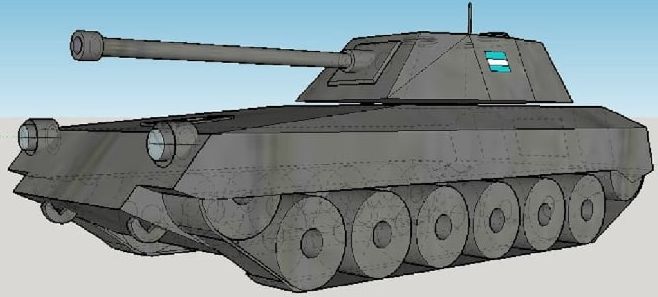
- 76/50/63 mm
- 89/50/63 mm
- 350 hp
- 400 hp
- 450 hp
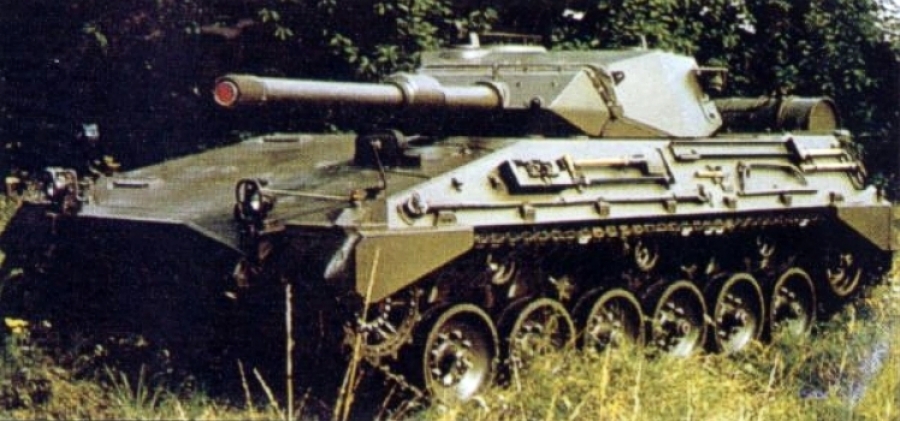
In the late 1970’s, the Argentinian Army needed to modernize their armoured units. The TAM project was under way, but the border crisis with Chile required an urgent reinforcement until the TAM was operational and the Army ordered the modernization of 250 Shermans, mainly the Firefly version then in service. This program included a new engine and a new armament. Many versions of M4 in the argentinian service were used, and the Repotenciado was born. Most of the Sherman Repotenciado are the british Sherman Hybrid Firefly IC, but it`s not the only version. The principal advantage in using the Firefly was the easy adaptation of the internal configuration to the new 105mm ammunition storage.
The modifications included the french Poyaud 520 diesel engine, french made 105 mm cannon, built under license in Fábricaciones Militares Río Tercero, and other minor improvements. These included a rear modification of the turret, with a counterweight for the new longer and heavier gun, four smoke grenade launcher, storage baskets and new positions for radio antennas. In the hull, the modifications was more extensive, the engine compartment was redesigned for the new Poyaud 520 diesel engine, the suspension was revised and upgraded, and the tracks are rebuilt. This project begun in 1976 and finished in 1978, just in time to be deployed during the border crisis with Chile, in december of that year.
A total of 252 Shermans in many versions are upgraded to ‘Sherman Repotenciado’ standard and the last vehicles stayed in service until 1994, when all the TAM VC medium tank were completely active in the I and II Brigadas Blindadas (1st and 2nd Armoured Brigades). Even now, in 2002, a few (12?) ‘Sherman Repotenciado’ are still in service for support roles with the URDAN mine roller.
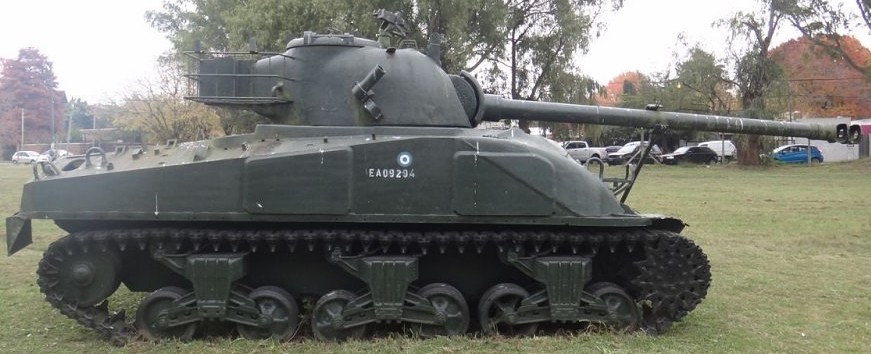
Repotenciado I was based on Sherman IC Hybrid (M4A1)
- 76/50/63 mm
- 450 hp
In the late 1970’s, the Argentinian Army needed to modernize their armoured units. The TAM project was under way, but the border crisis with Chile required an urgent reinforcement until the TAM was operational and the Army ordered the modernization of 250 Shermans, mainly the Firefly version then in service. This program included a new engine and a new armament. Many versions of M4 in the argentinian service were used, and the Repotenciado was born. Most of the Sherman Repotenciado are the british Sherman Hybrid Firefly IC, but it`s not the only version. The principal advantage in using the Firefly was the easy adaptation of the internal configuration to the new 105mm ammunition storage.
The modifications included the french Poyaud 520 diesel engine, french made 105 mm cannon, built under license in Fábricaciones Militares Río Tercero, and other minor improvements. These included a rear modification of the turret, with a counterweight for the new longer and heavier gun, four smoke grenade launcher, storage baskets and new positions for radio antennas. In the hull, the modifications was more extensive, the engine compartment was redesigned for the new Poyaud 520 diesel engine, the suspension was revised and upgraded, and the tracks are rebuilt. This project begun in 1976 and finished in 1978, just in time to be deployed during the border crisis with Chile, in december of that year.
A total of 252 Shermans in many versions are upgraded to ‘Sherman Repotenciado’ standard and the last vehicles stayed in service until 1994, when all the TAM VC medium tank were completely active in the I and II Brigadas Blindadas (1st and 2nd Armoured Brigades). Even now, in 2002, a few (12?) ‘Sherman Repotenciado’ are still in service for support roles with the URDAN mine roller.


- 50/?/? mm
- 720 hp
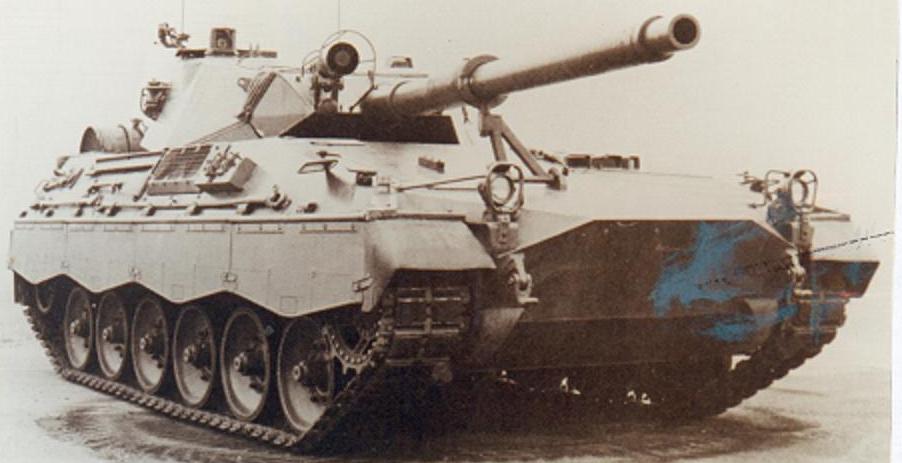
The Tanque Argentino Mediano is the main battle tank in service with the Argentine Army. Lacking the experience and resources to design a tank, the Argentine Ministry of Defense contracted German company Thyssen-Henschel. The vehicle was developed by a German and Argentine team of engineers, and was based on the German Marder infantry fighting vehicle.
The TAM met the Argentine Army's requirement for a modern, lightweight and fast tank with a low silhouette and sufficient firepower to defeat contemporary armored threats. Development began in 1974 and resulted in the construction of three prototypes by early 1977 and full-scale production by 1979. Assembly took place at the local 9,600-square-meter (103,000 sq ft) TAMSE plant, founded for the purpose by the Argentine government. Economic difficulties halted production in 1983, but manufacturing began anew in 1994 until the army's order of 200 tanks was fulfilled.
The TAM series includes seven different variants, such as a 155 mm (6.1-inch) self-propelled howitzer and a self-propelled mortar vehicle. In total, over 280 such vehicles were built, including armored personnel carriers, artillery and mortar pieces. The TAM and VCTP (Infantry Fighting Vehicles based on the TAM chassis) were manufactured for the Peruvian Army, only to be integrated into the Argentine Army when Peru canceled the contract. The TAM also competed for other export orders, but the TAM was ultimately not exported.
The TAM has never seen combat, although 17 VCTP were deployed to Croatia for the United Nations UNPROFOR peacekeeping mission.

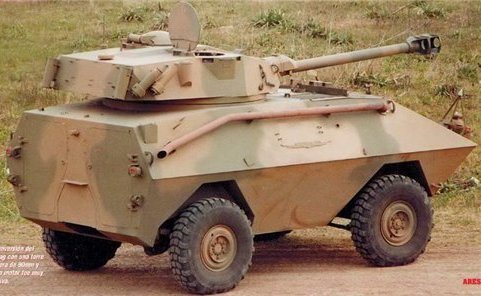
- 40/20/20 mm
- 250 hp
- 260 hp
- 300 hp
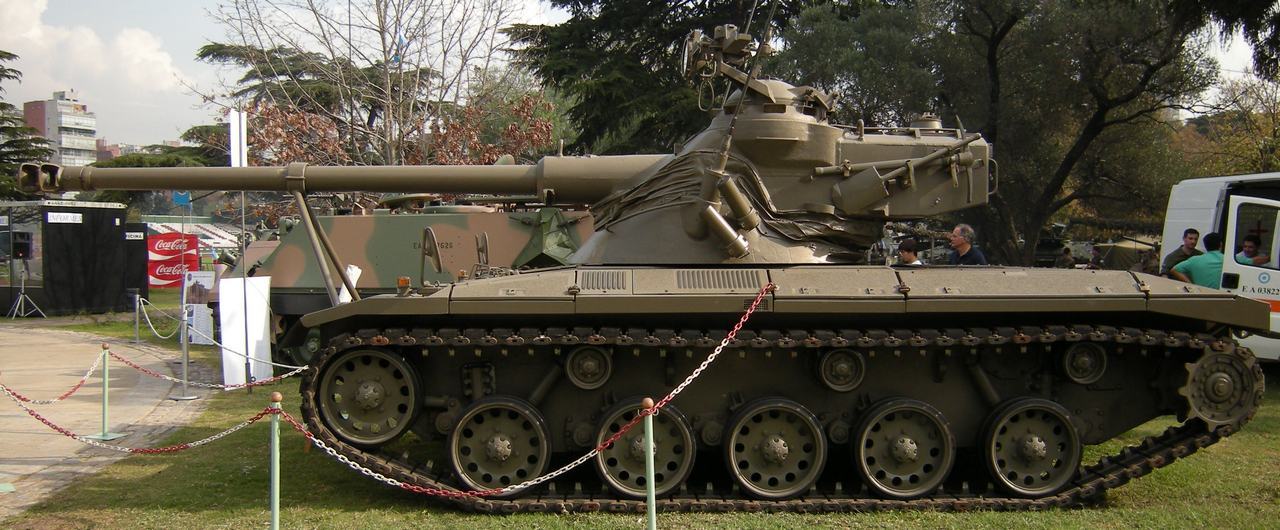
AMX-113 is an Argentinian modernization of AMX-13 105 in 1980's. Unfortunately, there's no data about it, including how it was modernized and how many vehicles built (possibly additional armor or/and new engine ect.).
Argentina recieved around 60 AMX-13/105 "Modéle 58" vehicles, equipped with a new 105 mm gun (GIAT 105G1 - L/44, used on the Kürrasier) and the FL-12 turret. Argentinian AMX-13's were further modified with diesel engine instead of the original SOFAM engines (KHD V-8 diesels, 260hp). Other sources state that the vehicles kept their original engines to be replaced by Deutz diesels during the 1979 modernisation.


- 50+ mm
- 750 hp
As a private venture, Thyssen-Henschel built a fourth prototype designated TH 301. Completed in 1978, it added a PERI R12 periscope, originally designed for the Leopard 1A4, for the tank commander. The gunner and loader each received a day periscope as well. To enable the crew to fire effectively at night, a low light level television (LLLTV) camera, which moved in elevation with the main gun, was fitted to the mantlet. Furthermore, the tank received a more powerful 550 kW (750 metric horsepower) engine. The improvement program also made provisions to increase the thickness of the armor for additional protection. This tank didn't enter the production.


- 40 mm
- 300 hp
The basic decision was taken in the early 2000's to develop a native SK-105/AMX-13 hybrid. The basic construction is the Kürrasier hull and the AMX-13 FL-12 turret. The turrets were produced (along with the guns) in Argentina from the early 60's, however, the Patagón FL-12 turret is not the original FL-12, but an overhauled model, made by Fives-Cail-Babcock (this overhauled version was used also on the Argentinian AMX-13's and was most likely installed during the 1999 refit) - note that a gun refit program from the same company allows the vehicle to fire the APDS rounds.
A prototype was unveiled on 24.11.2005 by the CIC of the Argentinian Army, general Roberto Bendini in Buenos Aires. The vehicle was to be manufactured in an assembly plant in Comodoro, under the supervision of Steyr advisors.
According to some sources, the production started and continued until 2007, with 40 pieces manufactured. Either way, in late 2008, the Patagon program was cancelled by the Ministry of Defense of Argentine "after a thorough analysis". The reason for cancellation was apparently the costs (the vehicles were very expensive with 20 mil USD per piece), the fact the active Kürrasiers in Argentinian army could perform the same task and also the fact the vehicle manufacture faced some serious delays. The remaining parts left over from the AMX-13 decommissions were instead transferred to the repair shops, responsible for keeping the 155mm F3 and VCL vehicles in running condition.

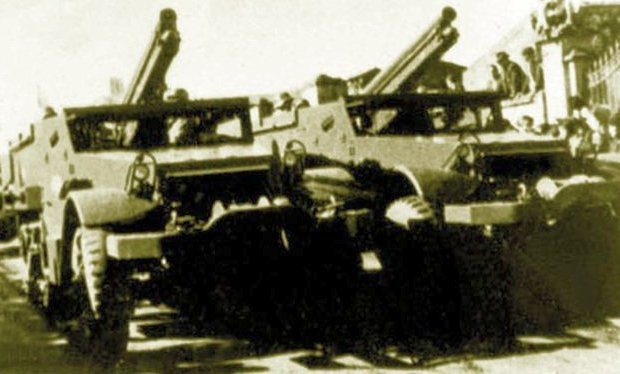
- 200 or 400 mm
- 85 hp
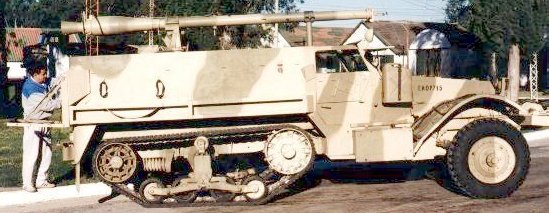
T16 Carriers arrived in Argentina between 1947 and 1948. During their service, T16′s were used for various duties, some were used as testbeds for unusual weapons, such as two PAPI (Proyector Antitanque Para Infanteri) launchers – a PAPI was essentially a copy of the German Panzerfaust. Another version was equipped with six-barrelled 105mm Argentinian recoilless rifle. Another one was equipped with a “Czekalsky” recoilless rifle and more were used to tow the 120mm Brandt mortars. T16′s were used as tractors as well.
T16′s served in the army until 1981 – the last army unit to use them was Palermo Compañia de Policia Militar 101 (MP company 101), which had four.
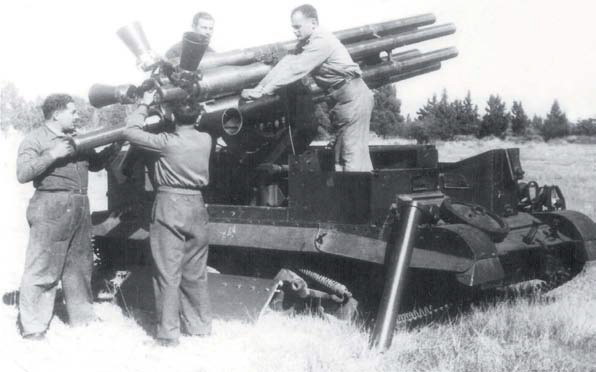

- 200 or 400 mm
- 85 hp

T16 Carriers arrived in Argentina between 1947 and 1948. During their service, T16′s were used for various duties, some were used as testbeds for unusual weapons, such as two PAPI (Proyector Antitanque Para Infanteri) launchers – a PAPI was essentially a copy of the German Panzerfaust. Another version was equipped with six-barrelled 105mm Argentinian recoilless rifle. Another one was equipped with a “Czekalsky” recoilless rifle and more were used to tow the 120mm Brandt mortars. T16′s were used as tractors as well.
T16′s served in the army until 1981 – the last army unit to use them was Palermo Compañia de Policia Militar 101 (MP company 101), which had four.